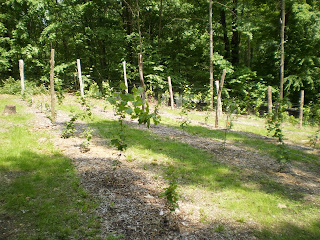Brix Fermentation Curve for 2011 Finger Lakes Riesling

The number one search that brings viewers to the Shier Winery blog is "brix fermentation curve." One of the great benefits of the WinePod is the real-time sugar sensor. Similar charts available in books and journals are nearly all made with discrete measurements taken throughout the fermentation process using a hyrdrometer. The real-time sensor shows the value to temperature control on the fermentation process. Fermentation without temperature control results in increasing temperature at the outset (fermentation is exothermic), followed by a temperature drop once the bulk of the sugar has been consumed. With temperature control, you see a relatively stable temperature and a more gradual sugar consumption (brix curve).






